Yining Dong
An Unsupervised Framework for Dynamic Health Indicator Construction and Its Application in Rolling Bearing Prognostics
Jun 05, 2025Abstract:Health indicator (HI) plays a key role in degradation assessment and prognostics of rolling bearings. Although various HI construction methods have been investigated, most of them rely on expert knowledge for feature extraction and overlook capturing dynamic information hidden in sequential degradation processes, which limits the ability of the constructed HI for degradation trend representation and prognostics. To address these concerns, a novel dynamic HI that considers HI-level temporal dependence is constructed through an unsupervised framework. Specifically, a degradation feature learning module composed of a skip-connection-based autoencoder first maps raw signals to a representative degradation feature space (DFS) to automatically extract essential degradation features without the need for expert knowledge. Subsequently, in this DFS, a new HI-generating module embedded with an inner HI-prediction block is proposed for dynamic HI construction, where the temporal dependence between past and current HI states is guaranteed and modeled explicitly. On this basis, the dynamic HI captures the inherent dynamic contents of the degradation process, ensuring its effectiveness for degradation tendency modeling and future degradation prognostics. The experiment results on two bearing lifecycle datasets demonstrate that the proposed HI construction method outperforms comparison methods, and the constructed dynamic HI is superior for prognostic tasks.
Deep Dynamic Probabilistic Canonical Correlation Analysis
Feb 07, 2025Abstract:This paper presents Deep Dynamic Probabilistic Canonical Correlation Analysis (D2PCCA), a model that integrates deep learning with probabilistic modeling to analyze nonlinear dynamical systems. Building on the probabilistic extensions of Canonical Correlation Analysis (CCA), D2PCCA captures nonlinear latent dynamics and supports enhancements such as KL annealing for improved convergence and normalizing flows for a more flexible posterior approximation. D2PCCA naturally extends to multiple observed variables, making it a versatile tool for encoding prior knowledge about sequential datasets and providing a probabilistic understanding of the system's dynamics. Experimental validation on real financial datasets demonstrates the effectiveness of D2PCCA and its extensions in capturing latent dynamics.
Computation-Efficient Semi-Supervised Learning for ECG-based Cardiovascular Diseases Detection
Jun 20, 2024Abstract:Label scarcity problem is the main challenge that hinders the wide application of deep learning systems in automatic cardiovascular diseases (CVDs) detection using electrocardiography (ECG). Tuning pre-trained models alleviates this problem by transferring knowledge learned from large datasets to downstream small datasets. However, bottlenecks in computational efficiency and CVDs detection performance limit its clinical applications. It is difficult to improve the detection performance without significantly sacrificing model computational efficiency. Here, we propose a computation-efficient semi-supervised learning paradigm (FastECG) for robust and computation-efficient CVDs detection using ECG. It enables a robust adaptation of pre-trained models on downstream datasets with limited supervision and high computational efficiency. First, a random-deactivation technique is developed to achieve robust and fast low-rank adaptation of pre-trained weights. Subsequently, we propose a one-shot rank allocation module to determine the optimal ranks for the update matrices of the pre-trained weights. Finally, a lightweight semi-supervised learning pipeline is introduced to enhance model performance by leveraging labeled and unlabeled data with high computational efficiency. Extensive experiments on four downstream ECG datasets demonstrate that FastECG not only outperforms the state-of-the-art methods in multi-label CVDs detection but also consumes fewer GPU footprints, training time, and parameter storage space. As such, this paradigm provides an effective solution for achieving high computational efficiency and robust detection performance in the clinical applications of pre-trained models under limited supervision.
Semi-Supervised Learning for Multi-Label Cardiovascular Diseases Prediction:A Multi-Dataset Study
Jun 18, 2023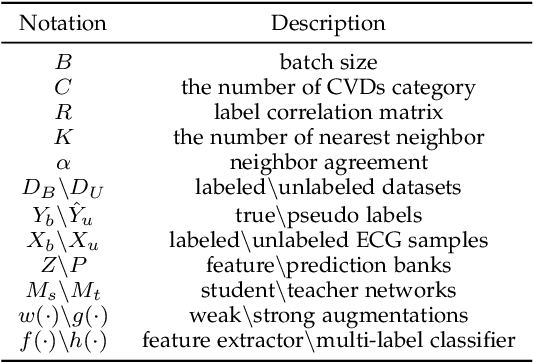
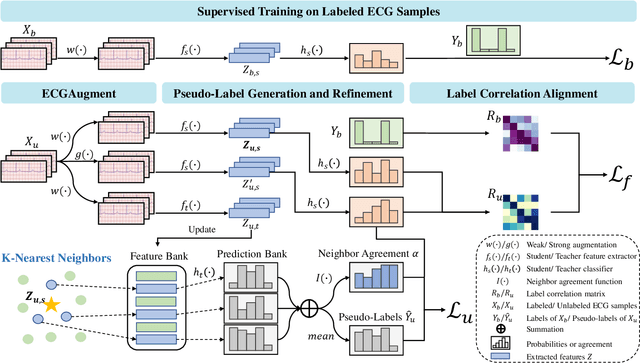
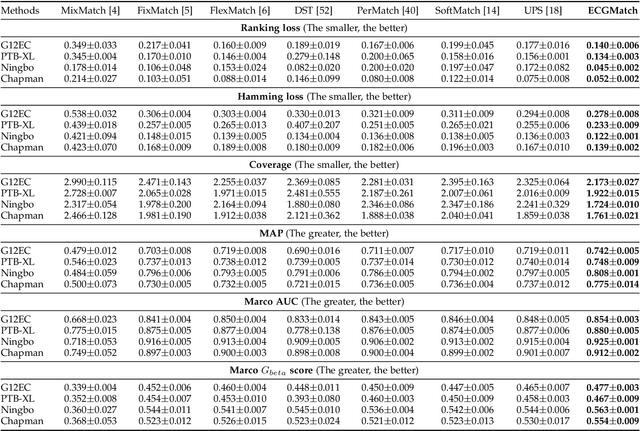
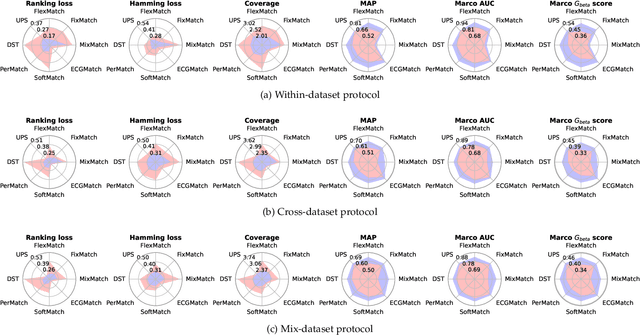
Abstract:Electrocardiography (ECG) is a non-invasive tool for predicting cardiovascular diseases (CVDs). Current ECG-based diagnosis systems show promising performance owing to the rapid development of deep learning techniques. However, the label scarcity problem, the co-occurrence of multiple CVDs and the poor performance on unseen datasets greatly hinder the widespread application of deep learning-based models. Addressing them in a unified framework remains a significant challenge. To this end, we propose a multi-label semi-supervised model (ECGMatch) to recognize multiple CVDs simultaneously with limited supervision. In the ECGMatch, an ECGAugment module is developed for weak and strong ECG data augmentation, which generates diverse samples for model training. Subsequently, a hyperparameter-efficient framework with neighbor agreement modeling and knowledge distillation is designed for pseudo-label generation and refinement, which mitigates the label scarcity problem. Finally, a label correlation alignment module is proposed to capture the co-occurrence information of different CVDs within labeled samples and propagate this information to unlabeled samples. Extensive experiments on four datasets and three protocols demonstrate the effectiveness and stability of the proposed model, especially on unseen datasets. As such, this model can pave the way for diagnostic systems that achieve robust performance on multi-label CVDs prediction with limited supervision.
EEGMatch: Learning with Incomplete Labels for Semi-Supervised EEG-based Cross-Subject Emotion Recognition
Mar 27, 2023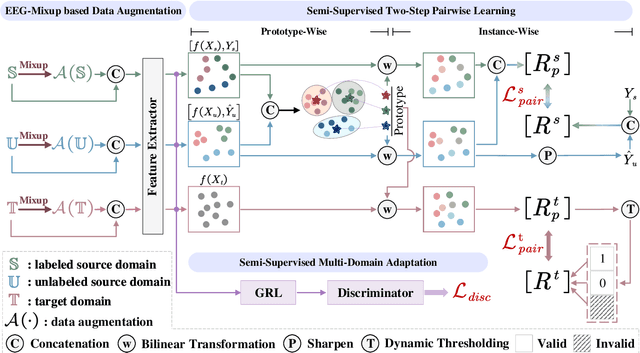


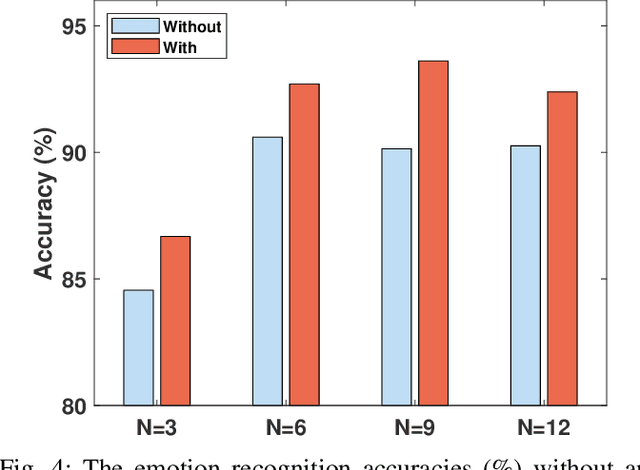
Abstract:Electroencephalography (EEG) is an objective tool for emotion recognition and shows promising performance. However, the label scarcity problem is a main challenge in this field, which limits the wide application of EEG-based emotion recognition. In this paper, we propose a novel semi-supervised learning framework (EEGMatch) to leverage both labeled and unlabeled EEG data. First, an EEG-Mixup based data augmentation method is developed to generate more valid samples for model learning. Second, a semi-supervised two-step pairwise learning method is proposed to bridge prototype-wise and instance-wise pairwise learning, where the prototype-wise pairwise learning measures the global relationship between EEG data and the prototypical representation of each emotion class and the instance-wise pairwise learning captures the local intrinsic relationship among EEG data. Third, a semi-supervised multi-domain adaptation is introduced to align the data representation among multiple domains (labeled source domain, unlabeled source domain, and target domain), where the distribution mismatch is alleviated. Extensive experiments are conducted on two benchmark databases (SEED and SEED-IV) under a cross-subject leave-one-subject-out cross-validation evaluation protocol. The results show the proposed EEGmatch performs better than the state-of-the-art methods under different incomplete label conditions (with 6.89% improvement on SEED and 1.44% improvement on SEED-IV), which demonstrates the effectiveness of the proposed EEGMatch in dealing with the label scarcity problem in emotion recognition using EEG signals. The source code is available at https://github.com/KAZABANA/EEGMatch.
Low Rank Forecasting
Jan 29, 2021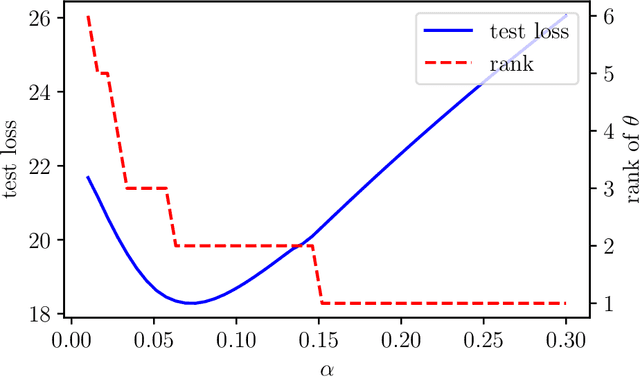
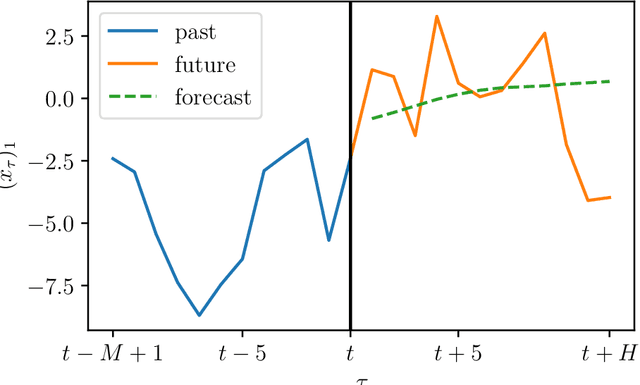
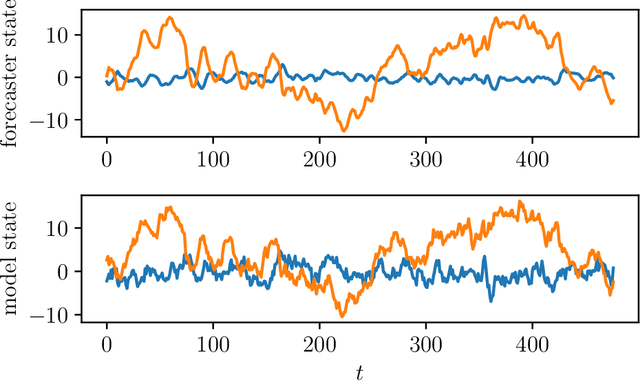
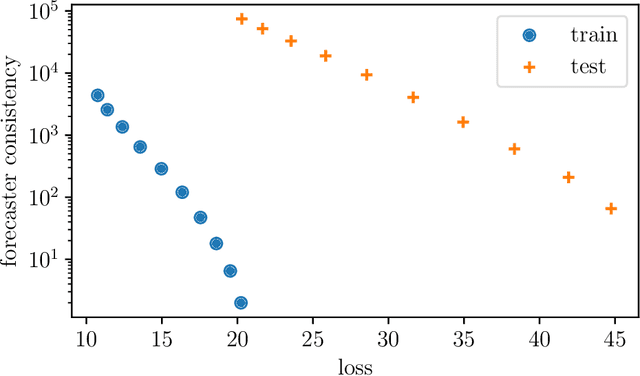
Abstract:We consider the problem of forecasting multiple values of the future of a vector time series, using some past values. This problem, and related ones such as one-step-ahead prediction, have a very long history, and there are a number of well-known methods for it, including vector auto-regressive models, state-space methods, multi-task regression, and others. Our focus is on low rank forecasters, which break forecasting up into two steps: estimating a vector that can be interpreted as a latent state, given the past, and then estimating the future values of the time series, given the latent state estimate. We introduce the concept of forecast consistency, which means that the estimates of the same value made at different times are consistent. We formulate the forecasting problem in general form, and focus on linear forecasters, for which we propose a formulation that can be solved via convex optimization. We describe a number of extensions and variations, including nonlinear forecasters, data weighting, the inclusion of auxiliary data, and additional objective terms. We illustrate our methods with several examples.
 Add to Chrome
Add to Chrome Add to Firefox
Add to Firefox Add to Edge
Add to Edge